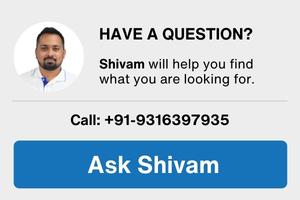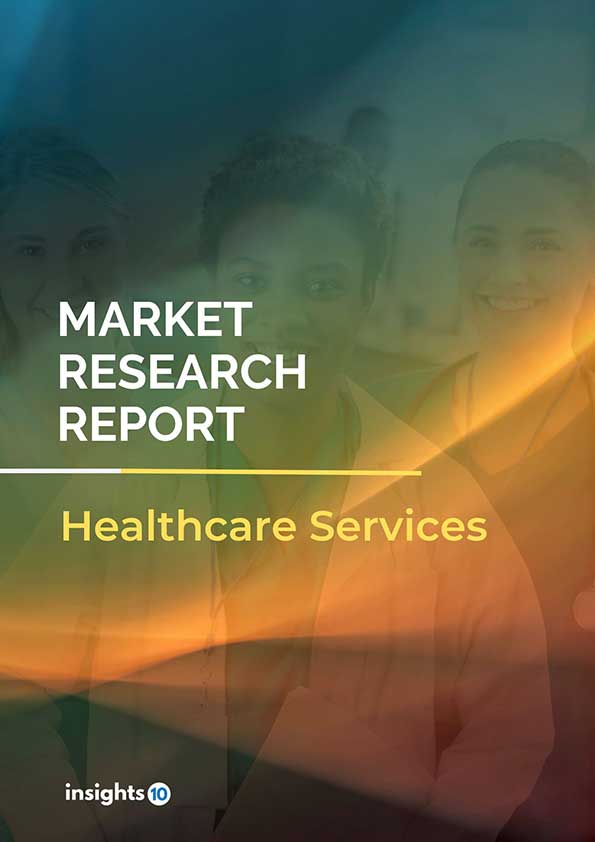Kenya Exosome Research Market Analysis
The Kenya Exosome Research Market was valued at $0.1 Mn in 2023 and is projected to grow at a CAGR of 17.1% from 2023 to 2023, to $0.4 Mn by 2030. The key drivers of this industry are increasing prevalence and incidences of cancer and various auto-immune diseases, rising healthcare expenditure for better health services, growing R&D activities associated with exosome research, technological advancements in exosome isolation and analytical procedures, increasing advanced applications of exosomes. The industry is primarily dominated by players such as Hologic Inc., Luminex Corporation, Agilent Technologies, Inc., QIAGEN, FUJIFILM Irvine Scientific, Cusabio Technology Llc, Nexosome-Oncology, Norgen Biotek Corp., Miltenyi Biotec, Beckman Coulter, Inc., and Hitachi, Ltd., among others.
Buy Now

Kenya Exosome Research Market Executive Summary
The Kenya Exosome Research Market is at around $0.1 Mn in 2023 and is projected to reach $0.4 Mn in 2030, exhibiting a CAGR of 17.1% during the forecast period 2023-2030.
Exosomes are nano-sized extracellular vesicles released by most cell types, playing a crucial role in intercellular communication and the transportation of molecules like proteins, lipids, and nucleic acids. The exosome market has garnered significant attention due to its potential applications across various fields. In therapeutics, exosomes can be used as natural drug delivery vehicles to transport therapeutic molecules to target cells or tissues, potentially improving specificity and reducing side effects. Additionally, the molecular composition of exosomes can serve as biomarkers for various diseases, enabling early detection and monitoring. In the cosmeceuticals sector, exosomes derived from stem cells or other sources are being explored for skin rejuvenation and anti-aging products. Furthermore, exosomes are valuable research tools for studying intercellular communication, disease mechanisms, and developing new therapeutic strategies.
Exosomes have significant therapeutic potential, particularly in the context of COVID-19 and other diseases. They can be used as cell-free alternatives for treating various conditions and tissue regeneration by delivering therapeutic cargo components while avoiding immune rejection and cellular toxicity. Stem cell-derived exosomes are particularly advantageous in harnessing the anti-inflammatory and regenerative abilities of parent cells, making them suitable for engineered treatments for respiratory viral diseases like SARS-CoV-2. Exosomes also have promising potential as a vehicle for drug delivery due to their natural material transportation properties, ability to support intrinsic long-term circulation, and high biocompatibility. These factors make them suitable for delivering a variety of proteins, chemicals, and nucleic acids. Research studies have shown positive results for exosomes as mediators of intercellular communication, potentially delivering functional proteins, mRNA transcripts, and miRNAs to cells throughout the body. Additionally, exosomes derived from certain cell types, such as dendritic and mesenchymal stem cells, have therapeutic properties and are biocompatible and efficient agents against various disorders, including organ injury and conditions like heart, kidney, liver, and lung illnesses. These properties make exosomes a promising therapeutic platform for the treatment of a range of diseases.
Cancer is a significant public health concern in Kenya, with increasing incidence rates over the past few decades. According to the World Health Organization (WHO), in 2020, the age-standardized cancer incidence rate in Kenya was approximately 111.9 per 100,000 population for both sexes combined. The market therefore is driven by significant factors like increasing prevalence and incidences of cancer and various auto-immune diseases, rising healthcare expenditure for better health services, growing R&D activities associated with exosome research, technological advancements in exosome isolation and analytical procedures, and increasing advanced applications of exosomes.
Some of the major players operating in the Kenya Exosome Research Market are Hologic Inc., Luminex Corporation, Agilent Technologies, Inc., QIAGEN, FUJIFILM Irvine Scientific, Cusabio Technology Llc, Nexosome-Oncology, Norgen Biotek Corp., Miltenyi Biotec, Beckman Coulter, Inc., and Hitachi, Ltd., among others.
Market Dynamics
Market Drivers
Growing research interest: Kenya has several universities and research institutions that are actively involved in biomedical research, including exosome studies. This growing research interest can contribute to the development of exosome-based products and technologies. Cancer is a significant public health concern in Kenya, with increasing incidence rates over the past few decades. According to the World Health Organization (WHO), in 2020, the age-standardized cancer incidence rate in Kenya was approximately 111.9 per 100,000 population for both sexes combined.
Government initiatives and support: The Kenyan government has recognized the potential of biotechnology and has implemented initiatives to support the growth of this sector, including exosome research, through funding and policy measures.
Increasing prevalence of chronic diseases: Kenya is experiencing a rising burden of chronic diseases like cancer, cardiovascular diseases, and metabolic disorders. Exosomes offer promising applications in early disease detection and targeted therapy, driving market demand.
Market Restraints
Limited infrastructure and expertise: Kenya have limited infrastructure and expertise specifically in the field of exosome research and development, which could hinder the growth of the exosome market.
High costs and affordability concerns: Exosome-based therapies are often expensive, and the affordability of these treatments may be a significant concern for a large portion of the Kenyan population, limiting market adoption.
Lack of public awareness: The lack of awareness and understanding among healthcare professionals and the general public regarding the potential applications and benefits of exosome-based therapies, which could hinder market adoption.
Regulatory Landscape and Reimbursement Scenario
The Pharmacy and Poisons Board (PPB) is the primary regulatory body for pharmaceuticals in Kenya. Established under the Pharmacy and Poisons, the PPB regulates the practice of pharmacy and the manufacture and trade in drugs and poisons. The Board aims to implement regulatory measures to ensure the highest standards of safety, efficacy, and quality for all drugs, chemical substances, and medical devices, locally manufactured, imported, exported, distributed, sold, or used, to protect the consumer.
The PPB is responsible for various functions, including the registration and listing of medical products, inspections and licensing of manufacturing premises, importing and exporting agents, wholesalers, distributors, pharmacies, and other retail outlets, and post-market surveillance to monitor the safety and efficacy of medicines after they are approved and released into the market. The PPB also regulates the import and export of controlled substances, including narcotics, psychotropic substances, and precursor substances, in line with the requirements of the International Narcotics Control Board (INCB) and the three International Conventions.
The PPB does not have a direct role in reimbursement, but the Ministry of Health is responsible for the procurement and distribution of medicines in the public sector. The Ministry aims to increase medicine availability in public health facilities to reduce the demand for medicines in the private sector, which can lead to the purchase of substandard or falsified medicines.
Competitive Landscape
Key Players
Here are some of the major key players in the Kenya Exosomes Research Market:
- QIAGEN
- Hologic Inc
- Agilent Technologies
- FUJIFILM Irvine Scientific
- Nexosome-Oncology
- Cusabio Technology
- Hitachi Ltd
- Beckman Coulter
- Biotek Corp
- Miltenyi Biotec
1. Executive Summary
1.1 Disease Overview
1.2 Global Scenario
1.3 Country Overview
1.4 Healthcare Scenario in Country
1.5 Patient Journey
1.6 Health Insurance Coverage in Country
1.7 Active Pharmaceutical Ingredient (API)
1.8 Recent Developments in the Country
2. Market Size and Forecasting
2.1 Epidemiology of Disease
2.2 Market Size (With Excel & Methodology)
2.3 Market Segmentation (Check all Segments in Segmentation Section)
3. Market Dynamics
3.1 Market Drivers
3.2 Market Restraints
4. Competitive Landscape
4.1 Major Market Share
4.2 Key Company Profile (Check all Companies in the Summary Section)
4.2.1 Company
4.2.1.1 Overview
4.2.1.2 Product Applications and Services
4.2.1.3 Recent Developments
4.2.1.4 Partnerships Ecosystem
4.2.1.5 Financials (Based on Availability)
5. Reimbursement Scenario
5.1 Reimbursement Regulation
5.2 Reimbursement Process for Diagnosis
5.3 Reimbursement Process for Treatment
6. Methodology and Scope
Kenya Exosomes Research Market Segmentation
By Products
- Instruments
- Software
- Reagents and Kits
By Applications
- Diagnostics
- Therapeutic
By Indication
- Cancer
- Cardiovascular Disease
- Neurogenerative Disease
- Infectious Disease
- Others
By Key End Users
- Hospitals
- Cancer Institutes
- Diagnostic Centers
- Others
Methodology for Database Creation
Our database offers a comprehensive list of healthcare centers, meticulously curated to provide detailed information on a wide range of specialties and services. It includes top-tier hospitals, clinics, and diagnostic facilities across 30 countries and 24 specialties, ensuring users can find the healthcare services they need.
Additionally, we provide a comprehensive list of Key Opinion Leaders (KOLs) based on your requirements. Our curated list captures various crucial aspects of the KOLs, offering more than just general information. Whether you're looking to boost brand awareness, drive engagement, or launch a new product, our extensive list of KOLs ensures you have the right experts by your side. Covering 30 countries and 36 specialties, our database guarantees access to the best KOLs in the healthcare industry, supporting strategic decisions and enhancing your initiatives.
How Do We Get It?
Our database is created and maintained through a combination of secondary and primary research methodologies.
1. Secondary Research
With many years of experience in the healthcare field, we have our own rich proprietary data from various past projects. This historical data serves as the foundation for our database. Our continuous process of gathering data involves:
- Analyzing historical proprietary data collected from multiple projects.
- Regularly updating our existing data sets with new findings and trends.
- Ensuring data consistency and accuracy through rigorous validation processes.
With extensive experience in the field, we have developed a proprietary GenAI-based technology that is uniquely tailored to our organization. This advanced technology enables us to scan a wide array of relevant information sources across the internet. Our data-gathering process includes:
- Searching through academic conferences, published research, citations, and social media platforms
- Collecting and compiling diverse data to build a comprehensive and detailed database
- Continuously updating our database with new information to ensure its relevance and accuracy
2. Primary Research
To complement and validate our secondary data, we engage in primary research through local tie-ups and partnerships. This process involves:
- Collaborating with local healthcare providers, hospitals, and clinics to gather real-time data.
- Conducting surveys, interviews, and field studies to collect fresh data directly from the source.
- Continuously refreshing our database to ensure that the information remains current and reliable.
- Validating secondary data through cross-referencing with primary data to ensure accuracy and relevance.
Combining Secondary and Primary Research
By integrating both secondary and primary research methodologies, we ensure that our database is comprehensive, accurate, and up-to-date. The combined process involves:
- Merging historical data from secondary research with real-time data from primary research.
- Conducting thorough data validation and cleansing to remove inconsistencies and errors.
- Organizing data into a structured format that is easily accessible and usable for various applications.
- Continuously monitoring and updating the database to reflect the latest developments and trends in the healthcare field.
Through this meticulous process, we create a final database tailored to each region and domain within the healthcare industry. This approach ensures that our clients receive reliable and relevant data, empowering them to make informed decisions and drive innovation in their respective fields.
To request a free sample copy of this report, please complete the form below.
We value your inquiry and offer free customization with every report to fulfil your exact research needs.









































